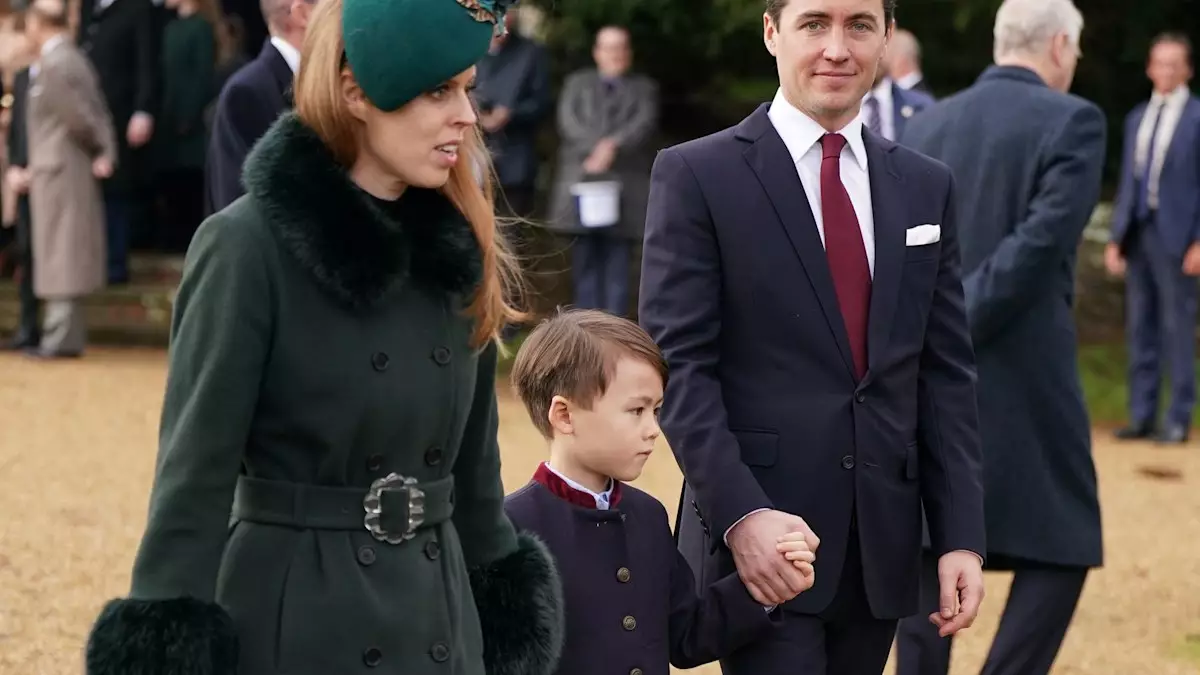The concept of family has undergone significant transformations over the years, particularly with the rise of blended families that merge different parental figures into one cohesive unit. One intriguing example of this is the family dynamic of Princess Beatrice, her husband Edoardo Mapelli Mozzi, and his son Christopher ‘Wolfie’ Woolf. This particular scenario highlights the strengths and challenges of co-parenting in a modern royal environment, demonstrating that love and connectivity can transcend conventional family boundaries.
Her relationship with Wolfie exemplifies Beatrice’s approach to modern motherhood. Many parenting journeys are fraught with complexities, especially in a scenario where step-relationships are involved. Nonetheless, Beatrice has embraced her role as a stepmother, navigating the challenges with openness and enthusiasm. During an interview, she reflected on her experience of homeschooling Wolfie during lockdown, candidly admitting it was a learning curve for her. This honesty not only showcases her relatable struggles but also emphasizes the importance of adaptability in parenting.
Interestingly, Wolfie is often kept out of the limelight, a choice that highlights the desire for privacy typical in royal circles. He is mostly seen through glimpses shared by his mother, Dara Huang, on social media, who offers a window into his everyday life. Recently, she posted a lighthearted Instagram story that revealed Wolfie’s school desk contents – Pokémon cards, a whimsical comic book, and indulgent Maoam sweets. These insights provide a refreshing counterpoint to the typically serious royal image, illustrating that a sense of playfulness permeates even the elite strata of society.
The co-parenting arrangement between Beatrice, Edoardo, and Dara seems to exemplify cooperation and mutual respect. Dara expressed her satisfaction with the supportive roles played by both parents, remarking, “the more, the merrier.” This sentiment is crucial in establishing a nurturing environment for Wolfie, as it fosters emotional security and love. Moreover, by allowing him to spend ample time with both sides of his family, Wolfie benefits from a rich tapestry of relationships that can only enhance his upbringing.
The introduction of Beatrice and Edoardo’s daughter, Sienna, adds another layer to the family dynamic. Dara’s enthusiastic remarks about Wolfie’s affection for his little sister spotlight the sense of unity and familial love that transcends traditional roles. This reinforces the idea that blended families can flourish, thriving on inclusivity and affection despite their intricate configurations.
As societal norms shift, the dynamics of blended families like Beatrice and Edoardo’s could serve as a blueprint for future families navigating similar paths. Their journey highlights that modern parenting does not adhere to rigid rules; rather, it is a fluid, evolving process built on communication, understanding, and love. Overall, their story is a testament to the ongoing evolution of family structures in today’s world, showing that happiness often springs from unexpected connections.

